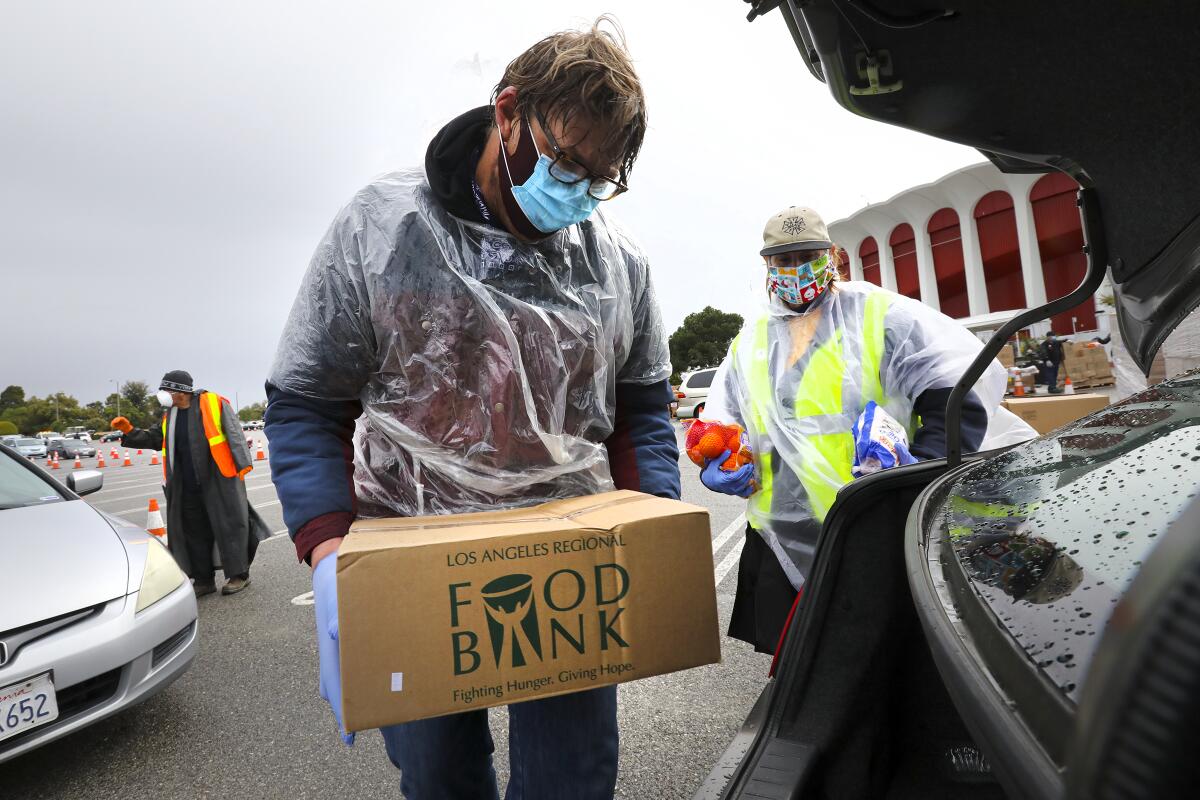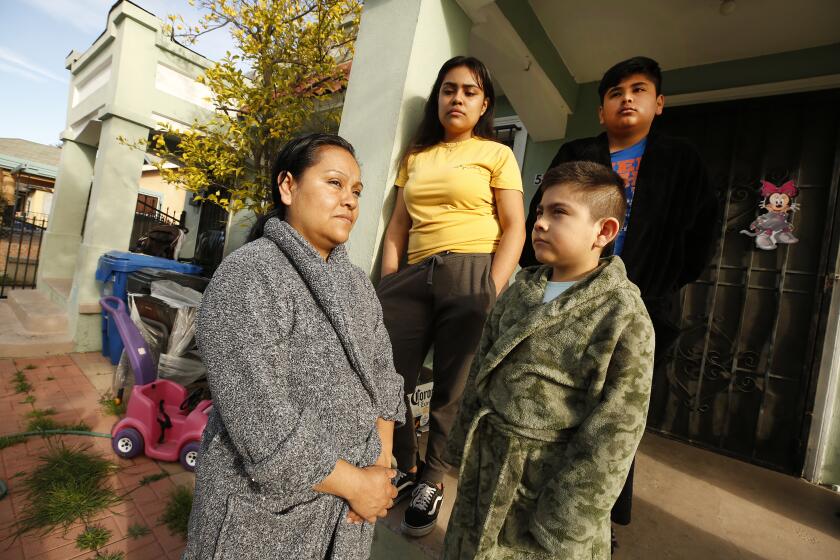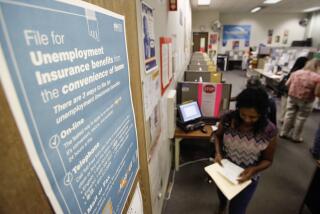California faces two years of high unemployment from coronavirus, UCLA predicts

- Share via
California’s job market is plunging and is not likely to recover soon, a new UCLA forecast predicts.
As the economic effects of the coronavirus worsen, the state’s unemployment rate may peak at 16.4% in the second quarter of this year, then gradually slacken. That would dwarf the 12.3% jobless rate in 2010, in the depths of the financial crisis.
But California’s unemployment will register double digits through 2021, Jerry Nickelsburg, director of the UCLA Anderson Forecast, said Friday. Even in the first quarter of 2022, nearly two years from now, the state’s joblessness will probably be as high as 8.5%, according to the university’s forecast. That would be more than twice as high as February’s 3.9% unemployment rate, before the effects of the economic shutdown registered.
“As with the U.S., employment in California will not return to its previous peak levels until late 2022,” the forecast suggested.
The UCLA economists’ new assessment was the second revision they have made to their regular spring quarterly forecast, which was published March 12 and revised March 16, as businesses began to shut down and lay off masses of workers.
The new forecast predicts an average of 2.2 million California jobs lost in the second quarter this year. But the total has already shot higher, with 2.9 million Californians applying for unemployment benefits in the last three weeks, according to the U.S. Department of Labor.
A hotel housekeeper, victim of a coronavirus layoff, struggles to support her three kids. ‘I just want to keep my little family together,’ she says.
Nickelsburg said the revised forecast is predicated on California easing its stay-at-home orders in May, allowing more businesses to reopen and begin rehiring. However, on Friday, Los Angeles County extended its stay-at-home order to May 15, and county health officials warned that it could stretch into the summer.
“If we are incorrect, and shelter-in-place orders go beyond what they are now, then our economic forecast may be too optimistic,” Nickelsburg acknowledged. “We don’t know how long this could go on. We are in uncharted waters.”
Another factor that the economists were unable to ascertain, he said, is the eventual effect of federal programs that are offering loans to businesses that rehire or retain workers.
The UCLA economists also had bad news for California’s government revenues.
“A sharp contraction in income and taxable sales will cause increased stress for state and local government at a time when the demands on them are increasing,” the forecast advised.
California goods subject to sales tax in 2019 were $717 billion, Nickelsburg said. That will drop to $608 billion in 2020, he predicted. Because jurisdictions tax at different rates, the forecast does not assess the amount of revenue the state may lose.
UCLA’s revised forecast coincided with the release of a report by the Los Angeles nonprofit research group Economic Roundtable that suggested, based on criteria from the Federal Reserve Bank of St. Louis, that 43% of California workers have a high risk of unemployment as a result of business closures and layoffs.
Coronavirus unemployment hits a broad swath of industries across California.
The report, titled “In Harm’s Way: Workers at High Risk of Unemployment in the COVID-19 Pandemic,” analyzed occupations according to the bank’s predictive factors, which hold that workers are less likely to be laid off if they are in essential occupations such as health or safety, in jobs that can be performed at home, or in salaried (as opposed to hourly) positions.
The report examined occupations in each of California’s counties and across races and ages.
“We set out to map the landscape,” said Dan Flaming, the group’s president and an urban planner. “We show the impact of the coronavirus on job loss falls more heavily on low-wage workers that provide basic services we count on. And it falls more heavily on younger workers and on Latinos.”
Half of Californians earn $40,000 or less, and the risk of unemployment drops as income rises. Among workers in poverty, 62% are at risk, compared with 28% of those with family incomes five times or more greater, the report found. (An individual worker under the federal poverty threshold typically earned $9,422 a year in 2018, compared with an average of $81,048 for workers with incomes five times as much or greater.)
Latinos and young adults seldom have the flexibility to work from home (20% and 19%, respectively), while 32% of African Americans, 43% of Asian Americans and 42% of European Americans have this flexibility, according to the report.
The report also noted a marked disparity between regions: Northern California counties have a lower share of vulnerable jobs than Southern California counties. In San Francisco, for instance, with its numerous technology jobs, just 33% of workers were at high risk of losing work. In Los Angeles, with a more diversified economy, 47% were at high risk.
More to Read
Inside the business of entertainment
The Wide Shot brings you news, analysis and insights on everything from streaming wars to production — and what it all means for the future.
You may occasionally receive promotional content from the Los Angeles Times.













